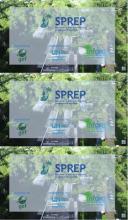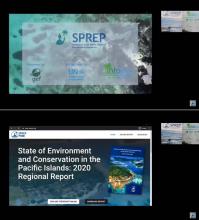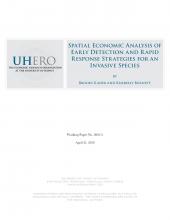Spatial Economic Analysis of Early Detection and Rapid Response Strategies for an Invasive Species

BRB
Available Online
Burnett, Kimberly
,
Kaiser, Brooks
2010
Economic impacts from invasive species, conveyed as expected damages to assets from invasion and expected costs of successful prevention and/or removal, may vary significantly across spatially differentiated landscapes. We develop a spatial-dynamic model for optimal early detection and rapid-response (EDRR) policies, commonly exploited in the management of potential invaders around the world, and apply it to the case of the Brown treesnake in Oahu, Hawaii. EDRR consists of search activities beyond the ports of entry, where search (and potentially removal) efforts are targeted toward areas where credible evidence suggests the presence of an invader. EDRR costs are a spatially dependent variable related to the ease or difficulty of searching an area, while damages are assumed to be a population dependent variable. A myopic strategy in which search only occurs when and where current expected net returns are positive is attractive to managers, and, we find, significantly lowers present value losses (by $270m over 30 years). We find further that in the tradeoff between search costs and damages avoided, early and aggressive measures that search some high priority areas beyond points of entry even when current costs of search exceed current damages can save the island more ($295m over 30 years). Extensive or non-targeted search is not advised however.









